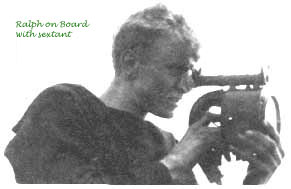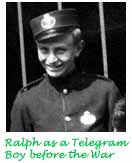

|
|||||
| Ralph Stobart Robson, signalman, life in the British Royal Navy World War Two, sinking of Prince of Wales and the Repulse, Singapore | |||||
|
|||||
|
|||||
|
The day of the route march had arrived and groups of sigs and tels marched all over the countryside north of Bombay. With little bundles of such things as bread and cheese and apparatus for making tea we marched as far north as Juhu Beach, now the sight of an airport. I was one of the very few who was fascinated by the birds, the vegetation and farming and of course the people, most of whom lived in poverty. Whenever we stopped a few locals always gathered, most of them children. We always created waste and took to taking more than we could eat, at least I did, and they would always take our gifts bowing their heads low and with their hands together before running off with their spoils. One day a buffalo was seen dead in the bed of a river. When we returned in late afternoon there was only a mound of bones accompanied by a solemn group of vultures - they had "buried" the buffalo! Law protected these birds, considered sacred and it was a crime to harm them but their job as scavengers was well known. Shortly after the road to Bandra turned south in the direction of Bombay there was a slaughter place with high walls lined with vultures. Beyond this was a large, flat gully about a quarter of a mile wide and beyond that the houses of the city started. This gully was covered with temporary houses of all kinds, cardboard boxes, widths of hessian and all sorts of rubbish. The significance of this will appear later. Shortly after the road to Bandra turned south in the direction of Bombay there was a slaughter place with high walls lined with vultures. Beyond this was a large, flat gully about a quarter of a mile wide and beyond that the houses of the city started. This gully was covered with temporary houses of all kinds, cardboard boxes, widths of hessian and all sorts of rubbish. The significance of this will appear later. |
|||||
|
|||||
